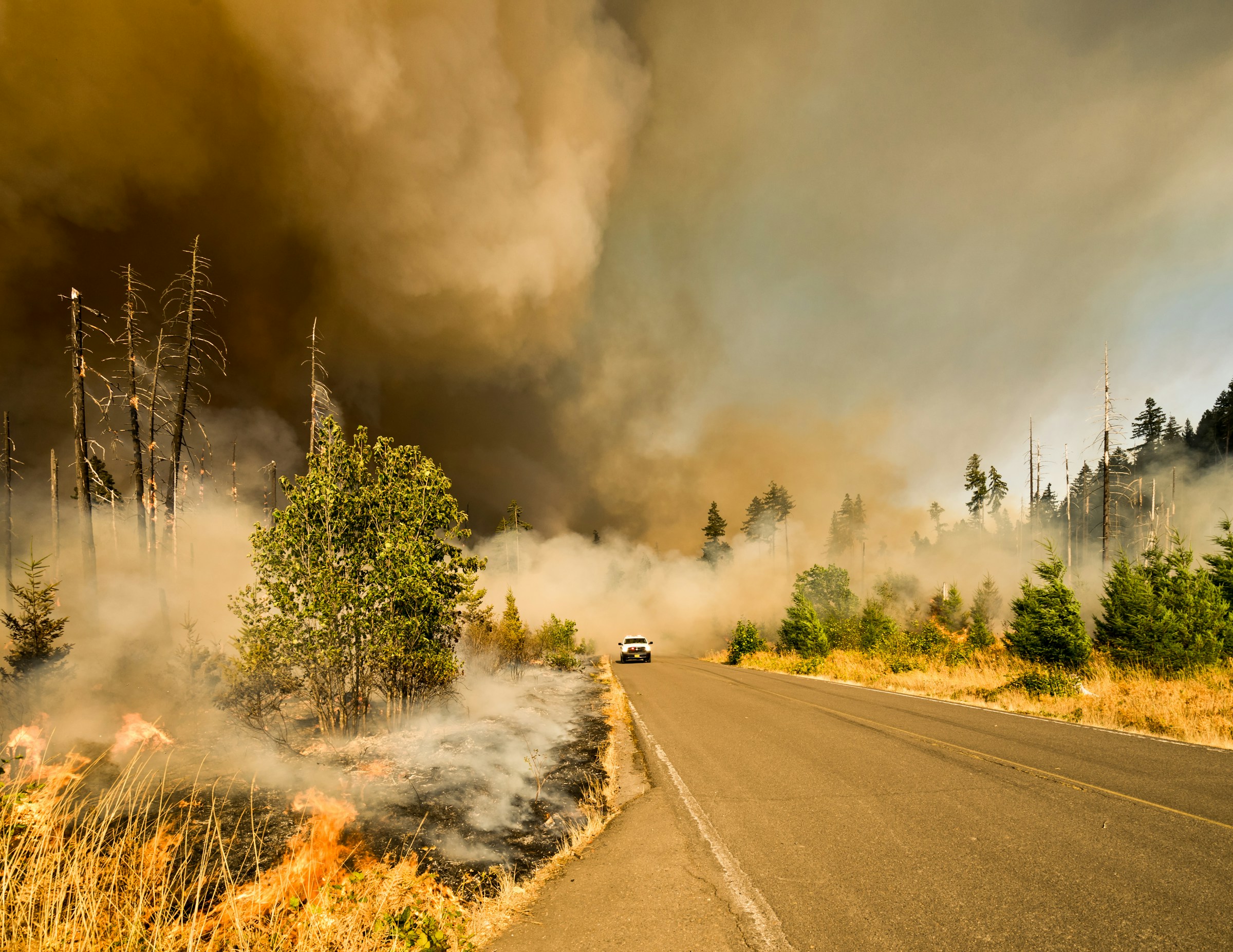
Stay up-to-date on the latest news, developments, and accomplishments from the WUI FIRE Institute. From new research findings to upcoming initiatives, discover how we're making a difference in protecting communities.
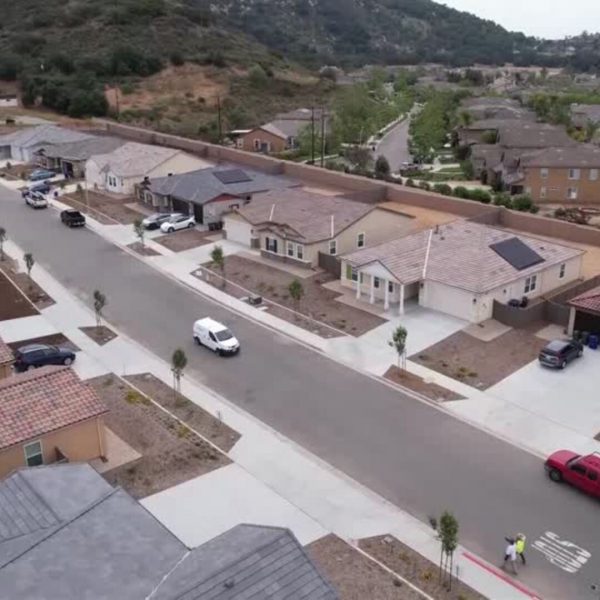
The first wildfire-resilient community was built by KB Homes in Escondido, CA. As noted in "KB Homes builds first 'wildfire-resilient' community in California", these homes are built with fire-resistant materials and methods to prevent the spread of fire through flames and embers. Selling for over one million dollars each, this community is for sale and ready to last.
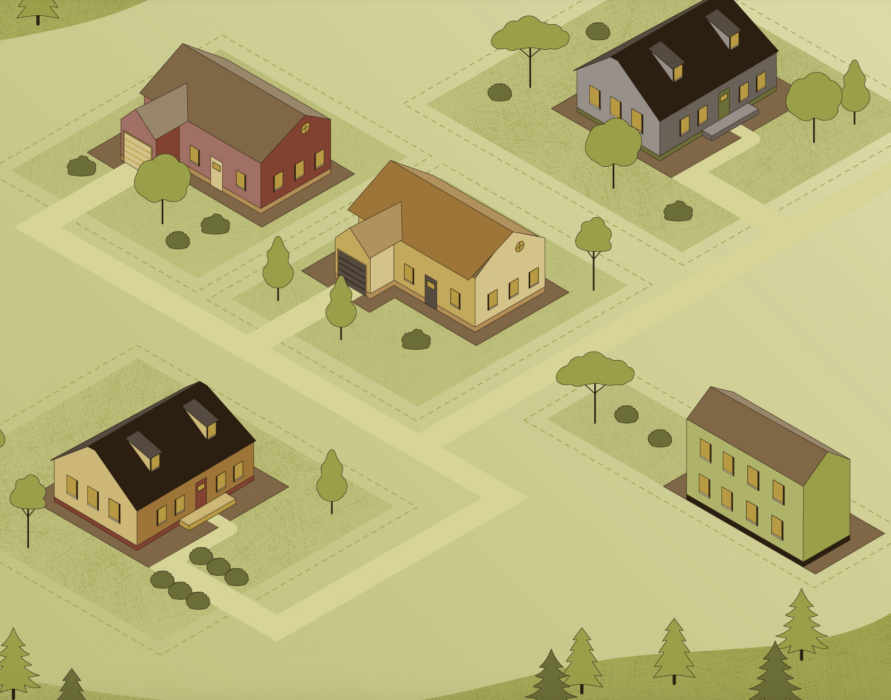
In the Spring 2025 issue of Cal Poly Magazine, the article "The Future on Fire" highlights Frank Frievalt, director of Cal Poly's Wildland-Urban Interface (WUI) Fire Institute. He warns of the increasing frequency and severity of these fires, and the initiative being taken by the WUI Fire Institute.
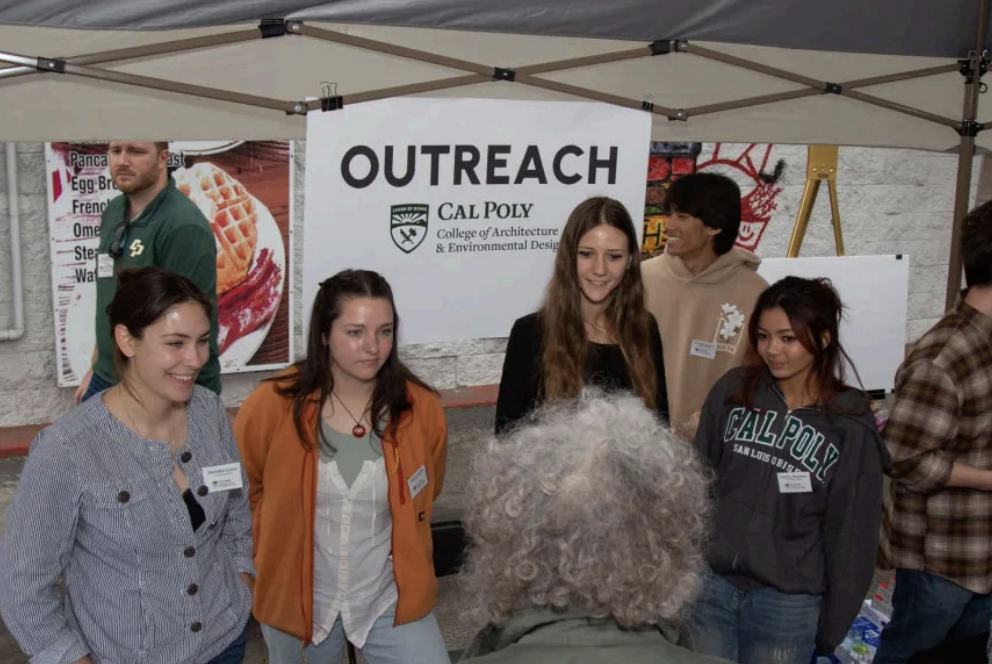
In the article "Rebuild 101: Altadena has become a case study in planning for this team as town emerges from fire", Jarret Liotta describes how Cal Poly students are helping Altadena rebuild after the Eaton fire by offering planning support, housing options, and community outreach as part of a hands-on recovery project. Further details are described on the Pasadena Star-News.

Following the recent LA fires, Director Frank Frievalt provided insight into the financial logistics of water distribution and management during Domino Effects: Insurance after LA fires, immigration enforcement, sober spirits (6:50-7:59; 11:32-11:38), an interview on Bloomberg's Wall Street Week program.

Director Frank Frievalt was featured on the Climate Proofers podcast episode titled Frank Frievalt on America's Wildfire Nightmare. He discussed the extreme conditions driving the LA fires, the growing challenges of managing wildfire risk in the wildland-urban interface, and the economic ramifications for insurers, lenders, and governments. Frank also explored how innovations in policies and standards could improve fire mitigation efforts.
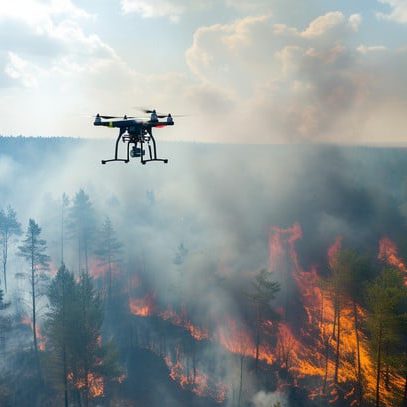
Director Frank Frievalt and Dr. Marc Horney share their expertise in NBC News' article, Startups Race to Build Bigger, Better Drones to Fight Bigger, Hotter Wildfires. They discuss the potential of autonomous drones in wildfire response, while highlighting key challenges such as regulatory hurdles, ensuring situational awareness, and coordinating drone operations with crewed aircraft and ground teams to avoid disruptions in firefighting efforts.

In the Marketplace podcast episode From Satellites to AI, Tech Has a Role to Play in Battling Blazes, Kate Dargan Marquis, a member of the WUI Fire Institute advisory council and former California state fire marshal, highlighted the growing role of technology in wildfire detection and response. She discussed innovative tools like AI-powered smoke detection cameras and the upcoming FireSat satellite network, designed to provide near-instant fire detection worldwide.
While emphasizing the urgency to close a 20-year technology gap, Dargan Marquis noted that technology alone cannot address the increasing scale and frequency of wildfires fueled by climate change. She called for comprehensive solutions involving community engagement, policy changes, and home-level passive protections to complement advancements in firefighting infrastructure.

The BBC article 'It Was a Hellscape': The Challenge of Evacuating Los Angeles During Wildfires explores the chaos of LA's wildfire evacuations, including gridlocked roads, abandoned cars, and overwhelmed infrastructure. Director Frievalt discusses how incremental development and strained infrastructure exacerbate the risks. He calls for hard conversations about rebuilding in fire-prone areas and investing in more resilient urban planning to address the growing threat of climate-driven disasters.

Frank Frievalt, director of the WUI FIRE Institute, recently participated in a discussion about the WUI Data Commons with experts from the insurance, fire service, catastrophe modeling, and actuarial professions. This initiative aims to enhance wildfire resilience for insurers and communities through data transparency, addressing the increasing impact of large and destructive wildfires on WUI communities and homeowners insurance markets. Other participants included Dr. Ian Giammanco from IBHS, Ryan Vigus from CSAA, and Nancy Watkins from Milliman.
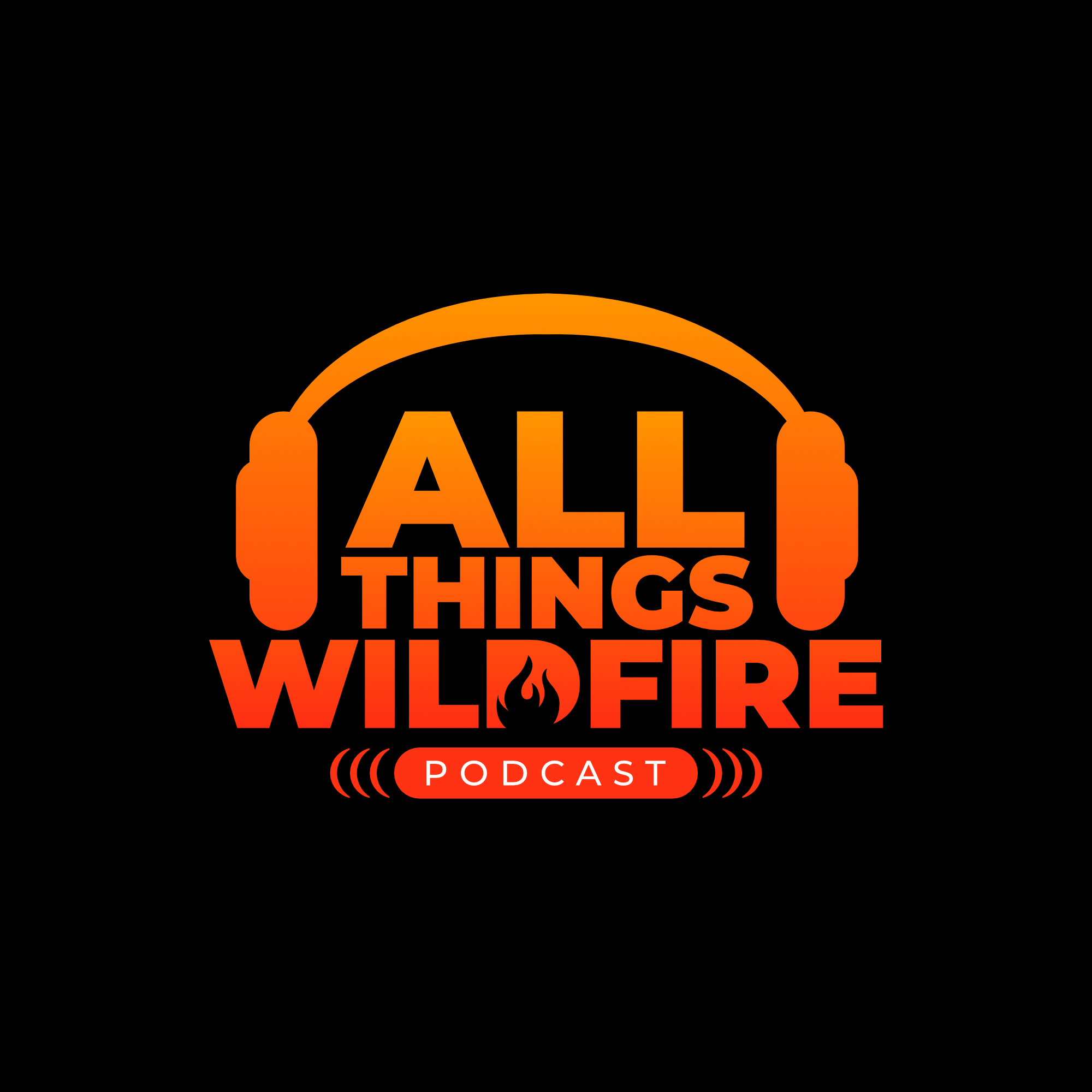
WUI FIRE Institute Director Frank Frievalt returned as a guest on the "All Things Wildfire" Podcast, Episode 23 - Navigating Wildfires, Insurance, and Real Estate Turbulence. This discussion centered around various impacts on the real estate and insurance markets in the context of wildfires.
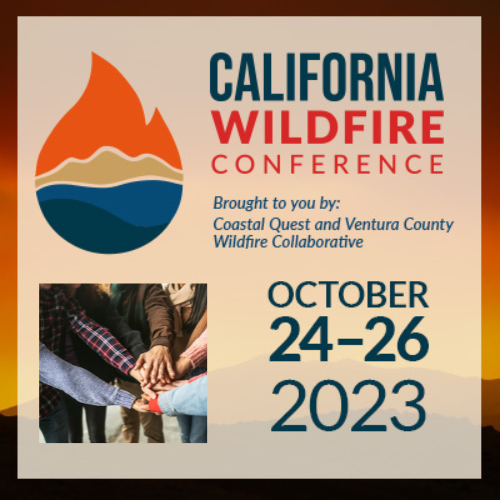
Director Frank Frievalt was featured as a keynote speaker at the California Wildfire Conference on October 25, 2023. The conference took place from October 24-26 at the Ronald Reagan Presidential Library in Ventura County with the goal of connecting wildfire practitioners to share firsthand knowledge and experience. Coastal Quest hosted this event alongside Ventura County Resource Conservation District and Ventura County Wildfire Collaborative in order to discuss how to best address the state of wildfire in terms of understanding, prevention, and recovery.

Nancy Watkins, Frank Frievalt and Dave Winnacker are leaders of a strategic alliance formed to address wildfire risk to communities in the wildland-urban interface (WUI).
In this Q&A-style article, Watkins, who is a consulting actuary, interviews Frievalt and Winnacker, who are experienced as fire chiefs in California, about their views on what insurance actuaries and insurers should know about wildfire risk today, how they can work with fire professionals and other stakeholders to navigate insurance market disruptions and to drive down wildfire risk in the WUI.

We're excited to share that WUI FIRE Institute Director Frank Frievalt was recently a guest on the "All Things Wildfire" Podcast, Episode 15 - A Strategic Approach To Wildfire Protection. In the episode, Frank discussed crucial topics such as ignition reduction strategies, wildfire protection for WUI communities, actuarial science, and post-fire reconstruction.
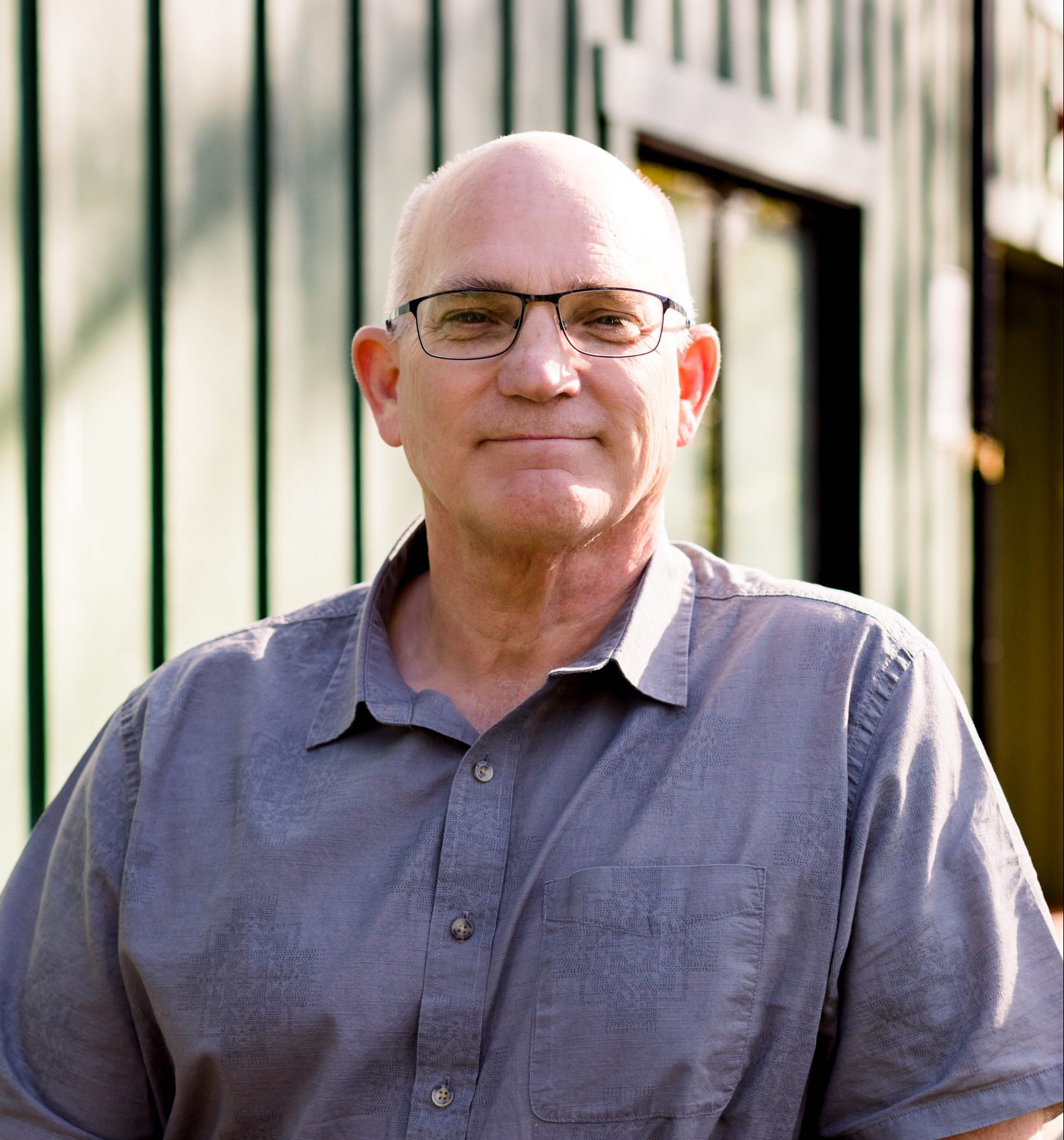
Chief Frievalt (ret.) has served since 1979 with Special District, City, County, State, and Federal fire agencies in roles from Firefighter to Fire Chief. He holds a M.S. from Oklahoma State University in Fire and Emergency Management Administration, and currently serves as Director of the Wildland-Urban Interface Fire Institute at Cal Poly, San Luis Obispo. Frank is an SME for the Gordon and Betty Moore Foundation Wildfire Advisory Council, and previously served as a Senior Policy Advisor to the Western Fire Chiefs Association, with an emphasis on the development of resilient Wildland Urban Interface (WUI) communities. His work is grounded in aligning key stakeholders around a core set of parcel and community level mitigations that will disrupt the fire pathways which lead to conflagration. He is pursuing the actuarial valuation of risk mitigations, for both the public and private sectors, because we share the same desired outcome, minimizing property loss to the peril of wildfire.
Broad public service career working for federal, state, city, and special district organizations, serving in positions from firefighter to fire chief. Areas of strength include organizational leadership and development, personnel management and development, stakeholder identification and inclusion, conflict resolution and interest-based negotiation, training and curriculum development, budget management and analysis, public policy analysis, project management, and incident management.
During the past six years, I have been deeply involved in policy, legislation, finance, actuarial science, fire science, catastrophe modeling, mitigation, and response analysis related to the Wildland Urban Interface. I am strongly committed to the concept of stewardship in managing public affairs. My overall qualifications represent an intentional life-long commitment to balance among operational experience, administrative capacity, formal education, and credibility among my peers.
University of Nevada, Reno
Ph.D. (ABD), Political Science, 2017
GPA: 3.67
Major in Public Administration, Minor in Public Policy. All coursework and comprehensive exams completed, withdrew during dissertation (50% completed) for family health reasons. Dissertation focused on the alignment of academic theory & curriculum with practitioner preferences for the development of future fire service leaders in North America.
Oklahoma State University
Master of Science, Fire and Emergency Management, 2004
GPA: 4.0
Thesis focused on local government implementation of the National Incident Management System as required by Homeland Security Presidential Directive 5.
Cogswell Polytechnic College
Bachelor of Science, Fire Administration, 1999
Summa Cum Laude
Bakersfield Community College
Associate of Science, Fire Science, 1986
Choate Rosemary Hall
Secondary School Diploma, Preparatory School, 1980 David T. Laymen Award
President, Phronesis Applied, LLC: 2011-2014, 2021-Present
Professional consulting services. Projects have included a university level academic professional development program for fire service leadership, undergraduate adjunct instruction in public policy, development of recruitment, examination, selection processes for local government, WUI focused legislative and policy development in California, private grant funding management and administration, professional conference presentations, research in catastrophe modeling, actuarial application of risk mitigations, research and evaluation of graph theory as a predictive model for structure to structure spread in WUI high-density built environments.
Fire Chief, Mammoth Lakes Fire Protection District: 2012 – 2022
Led approximately 60 personnel in a combination fire district, including planning, organizing, staffing, directing, coordinating, reporting, and budgeting. Collaborate and negotiate with and incorporated Town that is co-terminus with, but distinct from, the district. Served as the CalOES Operational Area Coordinator for Mono County (essentially a rural emergency manager; served as Chair of the local California Incident Command Certification System Committee.
Division Chief of Operations, City of Sparks Fire Department: 1987 – 2011
Promoted through ranks from Firefighter to Division Chief of Operations and Acting Fire Chief. Awarded Firefighter of the Year, Employee of the Year. Selected for numerous special assignments for the department and city. Held assignments in the Fire Prevention Bureau, and Training Division and Hazardous Materials Team. As Operations Chief, led 90 personnel across three battalions; managed budgets ranging from $9 to $11 million. Served as a Duty Chief for Region I of the Nevada Division of Emergency Management.
Adjunct Instructor, University of Nevada, Reno: 2011-Fall Semester
Instructor for undergraduate public policy course while enrolled as a Ph.D. student.
Sierra Front Incident Management Team: 2004– 2005
Division/Group Supervisor for the Sierra Front Type II Incident Management Team. NWCG Red Card qualifications and assignments included Division/Group Supervisor, Strike Team Leader, and Resource Unit Leader.
Acting Emergency Management Coordinator, City of Sparks: 1999 – 2001
Initiated NIMS Incident Command System training in anticipation of Homeland Security Presidential Directive 5 and served on the selection committee for Emergency Management Coordinators for the City of Sparks, and Washoe County. Served on the Local Emergency Planning Commission. Responsible for all administrative duties for the Emergency Management Program Grant.
Fire Academy Commander, Truckee Meadows Community College: 1999 – 2003
Academy Commander for the full-time Northern Nevada Fire and Rescue Academy, Instructor on Letter of Appointment. Duties included budget management, extensive scheduling, cadet performance, disciplinary actions, program management, and fill-in instructional duties as needed. Assisted students with programs of study, job applications, competitive civil service examination preparation.
General Partner, FIRE TRACS, LLC: 1995 – 2000
Consultant for industrial clients (e.g., Uniroyal, Syntex Pharmaceuticals, Portland Gas & Electric, Tektronics, Bahamas Oil Refining Corporation) on emergency response, management, policy, curriculum, and training at the response team and corporate level. Industrial incident consequences (e.g., environmental, financial, fatalities) to the community, and the mitigation of training. Community stakeholders sought out to help clients better understand unintended consequences of industrial accidents.
Curriculum Design & Instruction, University of Nevada-Reno, Dodd/Beals Fire Protection Training Academy: 1989 – 1994
Instructor and curriculum design for domestic and foreign petroleum and chemical industry clients, especially those related to hazardous materials and flammable liquids. Prioritization and scheduling of facility resources. Provided leadership and development to staff instructional cadre of 30+.
Instructor, Nevada State Fire Marshal Office: 1989 – 1994
Instructor for the state in fire, hazmat, and firefighter safety topics. Students were primarily full-time and part-time emergency responders.
Fire Station Manager, U.S. Bureau of Land Management: 1983 – 1987
Wildland positions from Firefighter to Station Manager (GS-6). Twice received the Federal Employee Achievement Award. Close work with rural, agricultural, and second homeowner stakeholders on fuels reduction and defensible space.
Emergency Medical Technician, Clovis Ambulance, (Helms Creek Pumped Storage Plant, PG&E): 1985—1986
Extended duty rotations during the winter at 7000’-9000’ in the Central Sierra Nevada Mountains for a large subterranean hydroelectric construction project. Experience operating in heavy snowfall, and with ground and air transports.
Firefighter, California Division of Forestry & Tulare County Fire Department: 1979 – 1982
Seasonal Wildland Firefighter, Volunteer Firefighter.
Subject Matter Expert, Moore Foundation Wildfire Advisory Council (MWAC): 2022-Present
Recruited to serve on a ten-person SME team to develop a new philanthropic vertical (Healthy Ecosystems & Resilient WUI Communities) within the Foundation portfolio. The resulting proposal, a 12-year, $200,000,000 package supporting various enabling outcomes for HE&RC, was reviewed and adopted by the Moore Foundation Board on 11/1/22. My specific responsibility was Insurance & Policy Alignment for Community Mitigations that Matter. Within this part of the proposal, $35,000,000 to $50,000,000 is targeted for WUI community scale adoption, implementation, and maintenance of parcel and community mitigations, impacts of initial response, fire pathway disruption and modeling, including their nexus to accurate pricing of risk in the insurance industry and inclusion in grant scopes of work.
Senior Policy Advisor, Western Fire Chiefs Association: 2022-Present
Wildfire Policy Committee. Project lead for Multi-state WUI Mitigation Alignment Project (grant funded, 48-months, $579,871). The project seeks to gain alignment among four states (plus California; see WUI Task Force Lead below) in the western US behind a core set of parcel and community level mitigations. The project design is born from a nested policy construct of desired outcome, mitigation policy components, and risk policy components. The objective is to create a tipping point of policy diffusion and market price signaling that will drive the balance of states with WUI risk to adopt a minimum core set of mitigations (“mitigations-that-matter”). These MTM would become imbedded in grant scopes-of- work and integral to rate plan submissions. Currently engaged with California, Oregon, Colorado, Washington, and Nevada.
WUI Task Force Lead, California Fire Chiefs Association: 2018-2022
Provided guidance on legislation, policy, and strategic planning on issues related to reduction of property loss in the WUI across public and private stakeholders, primarily to the State Fire Marshal, California Department of Insurance, Property Insurance Associations in California, and the California Fire Chiefs Association (CalChiefs). Managed $150,000 award from Factory Mutual, through WFCA, to develop strategies for reduced property loss in the WUI.
Public Safety Power Shut-Off Advisory Committee, Southern California Edison: 2018-2020
Served as a fire representative to the SCE PSPS Committee, providing input and recommendations to the utility. Risk mitigation strategies, prioritization, concepts of risk transfer, community outreach and education, analytic metrics, and consequence management were primary issues.
Incident Commander for Type-III All-Hazards Incident Management Team: 2019 – 2022
Developed the first IMT in Mono County, including formation documents, initial training, and team selection. Team activated March 15, 2020, to August 1, 2022 for regional COVID-19 response. Served 11 months as the EOC Director for the COVID-19 response under Unified Command (Town of Mammoth Lakes, Mono County, Mammoth Lakes Fire Protection District).
President, Emergency Management Section of CalChiefs: 2019 – 2022
Selected to revive a dormant section of CalChiefs. Recruited an executive board, drafted a new constitution and bylaws, overhauled website, established annual sponsorships with Genasys and FirstNet, served on the California Office of Emergency Services Standardized Emergency Management System Advisory Board, created integrated board collaboration with California Emergency Services Association.
Regional Radio Communications Working Group: 2018 -2022
Worked with regional partners to rebuild aged Very High Frequency (VHF) system. Recruited FirstNet/AT&T to accelerate network build schedule as a public/private cooperative model in rural US areas, evaluated integration of Land Mobile Radio (LMR)/Long-Term-Evolution (LTE) cellular coverage and cross band devices and application of mesh networks. Worked with California Radio Interoperability System on novel local government expansion of the network, including integration of FirstNet Mission Critical Push-To-Talk (MCPTT).
EMS Blue Ribbon Committee for Mono County: 2017-2019
Selected to serve on a Board of Supervisors advisory committee charged with development and submission of sustainable EMS system design and organizational development.
Mammoth Area Government (MAG) Group: 2013-2016
Hosted and facilitated a quarterly workshop for 20+ Mono County regional executives to collaborate on regional issues (e.g., legislative, environmental, economic, public safety, professional development).
California Senate Bill 1162: 2015-2016
Worked extensively with Senator Berryhill’s office to write this legislation; allowed transfer of excess funding in PERS Miscellaneous account to paydown unfunded accrued liability (UAL) in public safety PERS account. Passed unanimously by the legislature, vetoed by the Governor on contested recommendation of the California State Finance Director.
Assistance to Firefighters Grant: Vehicle Acquisition: 2014-2016
Successfully wrote, and was awarded, a $600,000 grant for replacement of an outdated Type I engine. Vehicle acquisition is the most competitive among AFG categories.
Program Manager, Leadership Excellence Challenge: 2009-2012
Managed a limited-entry leadership development two-year pilot program that included a robust series of presentations, working dinners, guided readings/discussion forums, and a multipart assessment center with participants from regional fire and law enforcement agencies. Program recognized for graduate and undergraduate credits at the University of Nevada, Reno.
FEMA Fitness Grant: 2008-2010
Integrated a federal grant with the City’s Cardiac Wellness Program to leverage resources into a seamless fitness/wellness program. Program adopted.
National Incident Management System Focus Group: 2003-Spring
Invited as a subject matter expert (OSU Graduate Student researching the implementation of HSPD-5) to attend a national focus group on design of the All-Risk National Incident Management System, held at the Emergency Management Institute in Emmitsburg, Maryland.
Internship with Nevada Division of Emergency Management: 2004-Spring
Assisted in research and development of improved Mass Casualty Incident planning and coordination among the counties and municipalities of Nevada.
Seminar with Belfast Fire Brigade: 2002-Spring
As part of graduate school program, was selected to attend a ten-day seminar in Northern Ireland, hosted and attended by their Fire Brigade. The experience greatly expanded my knowledge and appreciation of European emergency response methods, systems, and organizational practice and policy. Of cultural importance, the experience taught me a great deal about effectively dealing with religious, political, and ethnic diversity within the fire organization, even when the community is literally at war with itself.
“Catastrophe Models for Wildfire Mitigation: Quantifying Credits and Benefits to Homeowners and Communities.”
Fall 2022, Casualty Actuarial Society research paper with CoreLogic and Milliman. Requested to write a forward to the article.
“Outdoor Structure Separation Experiments (NOSSE): Preliminary Test Plan.”
NIST, January 10, 2022, contributing author of article about the Structure Separation Project, a multi- level project to assess structure-to-structure fire spread in Wildland-Urban Interface (WUI) communities.
“Balancing Technical Prowess with Soft Skills for Effective Fire Service Leadership.”
FireRescue1, February 25, 2020; the article discusses the risks of mistaking technical skills for leadership skills in the contemporary fire service as we increasingly rely on technology in the course of service delivery.
“Wildfire Response: A Conversation with a Fire Chief.”
Insurance Information Institute, September 12, 2019; the article addresses homeowner insurance in the WUI from the fire service, insurance, and citizen perspectives in an attempt to align risk mitigation with public policy.
“Will the Fire Service Court-Martial Our Billy Mitchell’s?”
FIRE ENGINEERING, April 2, 2015; the article discusses the professional and organizational dangers, benefits, and necessity of challenging accepted doctrine when technical change outpaces political change.
“So, You Want to Make a Change?”
FIRE ENGINEERING, September 29, 2013; the article suggests a framework of considerations, sequence, and prerequisites for intentional and enduring organizational change.
“Directives on My Watch.” (Initial article, editor request for an additional four-part series)
FIRE ENGINEERING, July 8, 2013; the article discusses the content and benefits of a concise and durable personal statement of intent in a leadership role.
“Is it Time Your Department Shifts its Focus from Rules to Values?”
FIRE RESCUE, July 2006; article shares the results of a series of community-centric stakeholder focus groups inquiring about, and implementing, the capabilities and characteristics that were most desired of their fire department.
“The Forecast for Financial Responsibility of Fire Suppression in the Wildland Urban Interface.”
Unpublished position paper requested by the Sparks City Manager for possible use in the state legislature regarding fiscal policy change for wildfire funding and reimbursement in Nevada.
“Clarification and Prioritization of EMS Issues.”
Unpublished position paper focused on the history, policy, administration, and financial considerations of a Public Utility Model EMS system; paper requested by the Sparks City Council.
Catastrophe and Climate Change Panel; APCIA Advocacy Planning Conference: 2022
Chicago, IL. Panelist for a discussion on growing wildfire risk, mitigation strategies, and paths to resilience.
Wildfire Knowledge Alignment Expert Working Group Presentation, Hoover Institute, Stanford University: 2022
Presentation about the cyclical interaction (Kaizen) of fire science, catastrophe modeling, actuarial science, public safety (response & prevention), data collection, data use, and fire reconstruction. Session revealed the missing segments to the desired state, after which I was able to promptly secure a 2-year $200,000 research grant from de-obligated sources to close the segment.
“Where Do WUI and Insurance Costs Intersect?”: 2022
Fire District Association of California Conference presentation on a policy construct of public/private shared interests, and solutions, using parcel and community level wildfire mitigations.
Wildfire Risk Alignment Stakeholders Meeting: 2021
Strategic presentation and interactive meeting held during the CalChiefs Conference arguably established the basis of mitigation alignment in California, and included Factory Mutual Global, California State Insurance Commissioner’s Office, Personal Insurance Federation of California, American Property Casualty Insurance Association, Insurance Information Institute, Insurance Services Organization, California State Fire Marshal’s Office, California Fire Chiefs Association, Fire Districts Association of California, California League of Cities Fire Chiefs Section, California State Association of Counties, Rural County Representatives of California, California Fire Safe Council, National Fire Protection Association, Institute for Business and Home Safety, National Institute of Standards and Technology.
“PTT Over Cellular & MCPTT: Not Just Theoretical Anymore.”: 2020
International Wireless Communications Expo, May 20, 2020, webinar discussion on integration of LMR and LTE technologies.
Fire District Association of California Annual Conference: 2016 – 2020
Various presentations on administrative and leadership topics at the Leadership Development Symposium, and Certificate of Achievement Seminars.
“Directives on My Watch.”: 2015
Presentation on benefits and development of a personal statement of intent for leaders; delivered to national and international fire service professionals attending the Fire Rescue International conference in Atlanta, Georgia.
“The Cavitation of Fire Service Leadership Development.”: 2012
Presentation on leadership development shortfall delivered to international fire service professionals attending the Fire Rescue International conference in Denver, Colorado.
“Easy-Company Leadership.”: 2011
Presentation on leadership, applying lessons from the 101st Airborne, “Easy” Company, WWII, delivered to western fire service professionals attending the fire conference FireShowsReno, Reno, Nevada.
“Our Sisyphean Task: Delivering Authentic Public Sector Leadership on the Unstable Footing of Partial Private Sector Comparisons.”: 2011
Invited to present at the Mammoth Area Government (MAG) monthly meeting (September). Presentation focused on appropriate use of best private sector business practices without compromising first principles of democratic governance.
“Introduction to the Leadership Excellence Challenge.”: 2011
Presentation on a 2-year pilot program for leadership development, delivered to western fire service professional attending the fire conference FireShowsReno in Reno, Nevada.
“The Leadership Excellence Challenge.”: 2011
Presentation on a 2-year pilot program for leadership development, delivered to national and international fire service professionals attending the Global Leadership Forum, Fire Rescue International conference in Atlanta, Georgia.
“Step up or Step Aside.”: 2010
Presentation on encouraging line personnel to enter into leadership roles, delivered to western fire service professionals attending the fire conference FireShowsReno in Reno, Nevada.
“The Essential Community Input Project.”: 2007
This was a community-centric project to support our department shift from being rule-driven to value- driven. The project was submitted to the Innovations Group and selected for presentation at the 2007 Transforming Local Government Conference in Bellevue, Washington.
“Overview of the U.S. Fire Service Role in the Management of Traffic Related Emergencies.”: 2006
Requested by the School of International Studies, University of Nevada-Reno, to present to a delegation of government and civic leaders from Turkmenistan. Reno, Nevada.
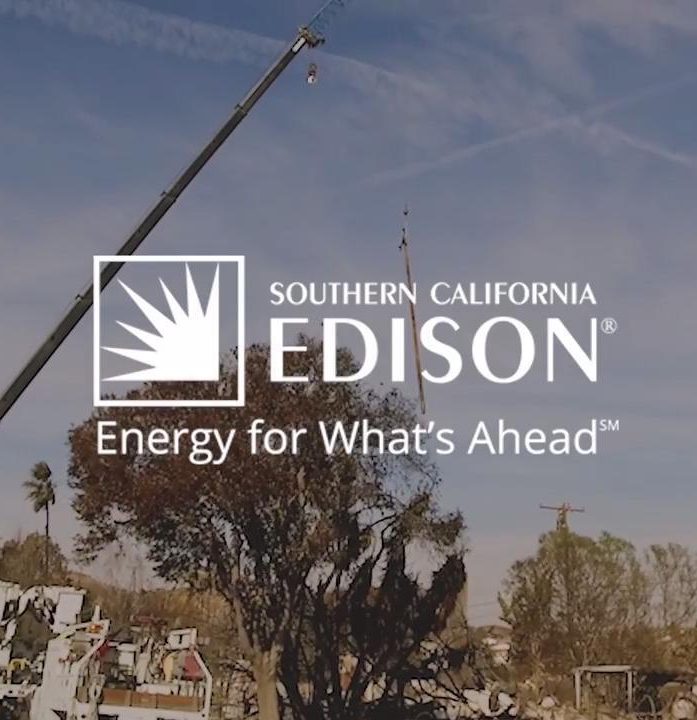
ROSEMEAD, Calif., March 27, 2023 — Southern California Edison today submitted its 2023-25 Wildfire Mitigation Plan- link opens in new window to California’s Office of Energy Infrastructure Safety. SCE has reduced the probability of wildfires associated with its utility equipment by 75%-80% since 2018. This is a significant improvement within a short period and the company’s long-term public safety goals continue to be ambitious.
This year’s plan details the company’s strategy to continue grid hardening with covered conductor, also known as coated wire, and undergrounding more power lines in locations with the highest wildfire risk.
“We plan to further reduce the risk of wildfires and the impact of Public Safety Power Shutoff (PSPS) in this three-year phase of the WMP through grid hardening and customer care programs, building on the steady work we have completed over the past few years,” said Steven Powell, president & CEO of SCE. “We understand the impact our customers in high fire risk areas have faced from the threat of wildfires and the PSPS program that prevents wildfires.”
The 2023-25 plan includes a range of measures and key staples from previous plans. These include grid hardening primarily through the installation of covered conductor, enhanced vegetation management and advanced monitoring and alert systems to enhance situational awareness during dangerous weather events — all of which are vital to preventing ignitions from utility infrastructure. The plan further outlines the continued use of drones and helicopters to inspect more than 250,000 structures each year in high-risk areas to determine the potential need for repair or replacement.
“My city has been identified by the state of California as being in a high fire risk area. As such, I appreciate Southern California Edison’s annual wildfire plan and its collaborative efforts toward reducing the threat of wildfires in our community,” said City of Thousand Oaks Councilman Robert Engler. “Grid hardening, vegetation management and the deployment of resources like the Quick Reaction Force Helitankers are indicative of Edison's efforts to reduce fire exposure to cities like my own.”
The plan prioritizes the installation of covered conductor in areas of higher wildfire or PSPS outage risk. SCE plans to install more than 2,850 additional miles of covered conductor during this plan period. By the end of 2025, the company expects to have replaced more than 7,200 miles, or about 75%, of overhead distribution power lines in high fire risk areas with covered conductor.
“Our 2023-25 plan builds on the significant progress of our wildfire mitigation program over the past four years — progress that is necessary as we witness the devastating effects of extreme weather,” said Jill Anderson, executive vice president of Operations for SCE. “Our wildfire mitigation efforts will add resiliency to the electric system as we navigate a changing climate and move toward increased electrification in the economy.”
SCE has identified specific high-risk areas across its service area where the undergrounding of power lines will be prioritized. The company is evaluating several hundred miles of power lines for undergrounding and plans to complete about 100 miles by 2025 to address the high risk presented by limited exit and entry points to communities, extreme potential consequences and other factors.
Over the next plan period, SCE will continue to focus and prioritize much of the company’s efforts on vulnerable communities and those areas that have been impacted by PSPS, particularly for Access and Functional Needs customers. SCE will also evaluate and refine its stakeholder coordination and customer outreach programs based on feedback received from these stakeholders.
Lastly, SCE is expanding its partnership with fire agencies in its service area by moving to a year-round Quick Reaction Force (QRF) of aerial firefighting resources. The QRF includes helitankers, reconnaissance aircraft and equipment to bolster firefighting. These capabilities help to reduce a fire’s consequences, provide service resilience to customers and protect electrical infrastructure.
Visit edison.com/wildfire-safety- link opens in new window for more information regarding SCE’s Wildfire Mitigation Plan.
About Southern California Edison
An Edison International (NYSE: EIX) company, Southern California Edison is one of the nation’s largest electric utilities, serving a population of approximately 15 million via 5 million customer accounts in a 50,000-square-mile service area within Central, Coastal and Southern California.
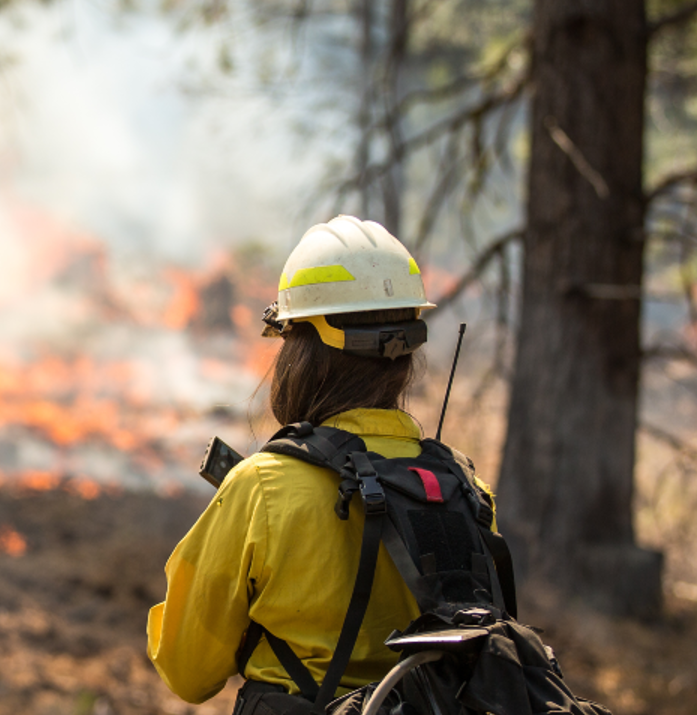
Feb. 15, 2023, Palo Alto, Calif. — After a century of fire exclusion, ecosystems and communities across Western North America now face a growing threat from extreme wildfire. In part, this reflects changes in climate that have yielded hotter, drier seasons. Other factors contribute too: ecosystem fragmentation, historic clear-cutting, pathogens and invasive species, increasing sprawl and development at the wildland-urban interface, and a related increase in human-caused ignitions.
Impacts of extreme wildfire range from the erasure of ecological heterogeneity across tens of thousands of acres at a time, to the backsliding on decades of air quality public health gains, with millions of people across Western North America now annually exposed to dangerous levels of fine particulate matter.
To address this growing challenge, the Gordon and Betty Moore Foundation is launching a new initiative that will invest $110 million over the next six years as the first of two planned phases to support the Wildfire Resilience Initiative.
“Wildfire is a growing and imminent challenge in Western North America and around the world. The wildfire challenge and many scalable solutions sit at the intersection of our interests — conserving nature, catalyzing scientific advancements, and preserving the special character of the Bay Area,” said Aileen Lee, chief of programs at the Gordon and Betty Moore Foundation. “If we want to be proactive about adapting to the reality of living with climate change, how we prepare and respond to wildfire risk will make a critical difference.”
Fire was once an integral, healthy element within many Western North American landscapes. For these ecosystems to thrive, fire needs to be able to play its essential role, and that means both reducing extreme wildfire events and, when conditions allow, increasing beneficial fire — through cultural burns, prescribed burns, and managed wildfire. Ecological benefits include ecosystem integrity, habitat and biodiversity conservation, and reduced net greenhouse gas emissions. Yet not all wildfire policies have advanced at pace with scientific understanding.
In the last 100 years, Western North America has traded many small fires for fewer, catastrophic, large fires. Persistent fire suppression has unintentionally made people and communities more vulnerable to wildfires, not less. Although the scientific community recognizes the need for more lower intensity fire to burn, public attitudes and legitimate concerns about safety and property have made it difficult to implement new policies and practices to promote active use of beneficial fire.
“This initiative aims to help speed a systemic and strategic transformation in the role that fire plays — and is understood to play — across Western North America,” said Genny Biggs, program director at the Gordon and Betty Moore Foundation. “Sustained wildfire resilience will mean increased ecosystem health and community security. Ultimately, we want communities to be able to coexist with fire, not as an unwanted, destructive threat, but as an essential, vital part of our landscapes.”
In order to achieve these goals, strategic and coordinated investments will be crucial. Success in this field will require better technology and systems, to know where all fires are and to predict their behavior more accurately. It will require successful demonstrations of wildfire resiliency that can be systematically planned and implemented at scale, to sustain healthy fire-adapted ecosystems and safeguard fire-prone communities. Through upstream interventions that reduce the risk of severe and detrimental wildfires, and increase beneficial fire, our fire-adapted ecosystems and fire-prone communities will become more resilient.
In the dynamic context of our changing climate, we believe that reaching a long-term vision of wildfire resilience across Western North America — a point at which the total annual area burned is burned by beneficial fire — will require not only a shared understanding of the transformations that are needed, but also time and patience, potentially over multiple decades.
Targeted philanthropic funding can help realize that vision by supporting:
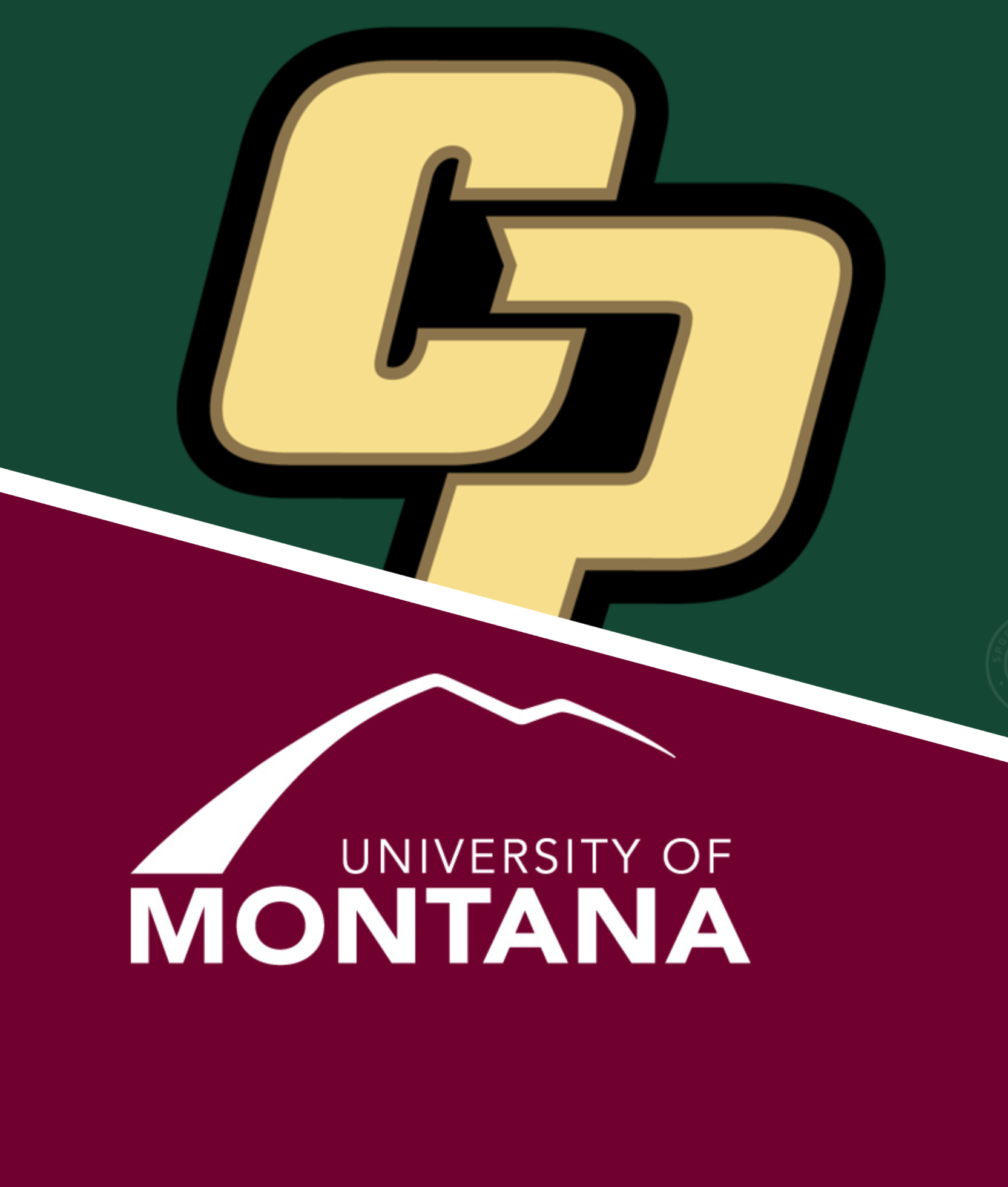
In January 2023, Cal Poly’s WUI FIRE Institute and the National Center for Landscape Fire Analysis (NLCFA) at the University of Montana, in collaboration with the USDA Forest Service’s Rocky Mountain Research Station (RMRS) received $2.38 M in funding from the Forest Service to launch the California-Montana Fire Partnership. The overall partnership goals are workforce development, community resilience at the wildland-urban interface (WUI), technology for safety and efficiency, fire prediction, and to improve management practices for prescribed fires. Cal Poly’s portion of this funding, $1.19 M, will support work on development of a “living laboratory” for fuel treatments in the WUI, a roadside fire ignition prevention study, the use of unmanned aerial vehicles for wildfire and WUI fire planning, mitigation, response, and recovery, and fire-related curriculum, including a minor in fire science.
For more information, please contact Dr. Jim Prince at jpprince@calpoly.edu.
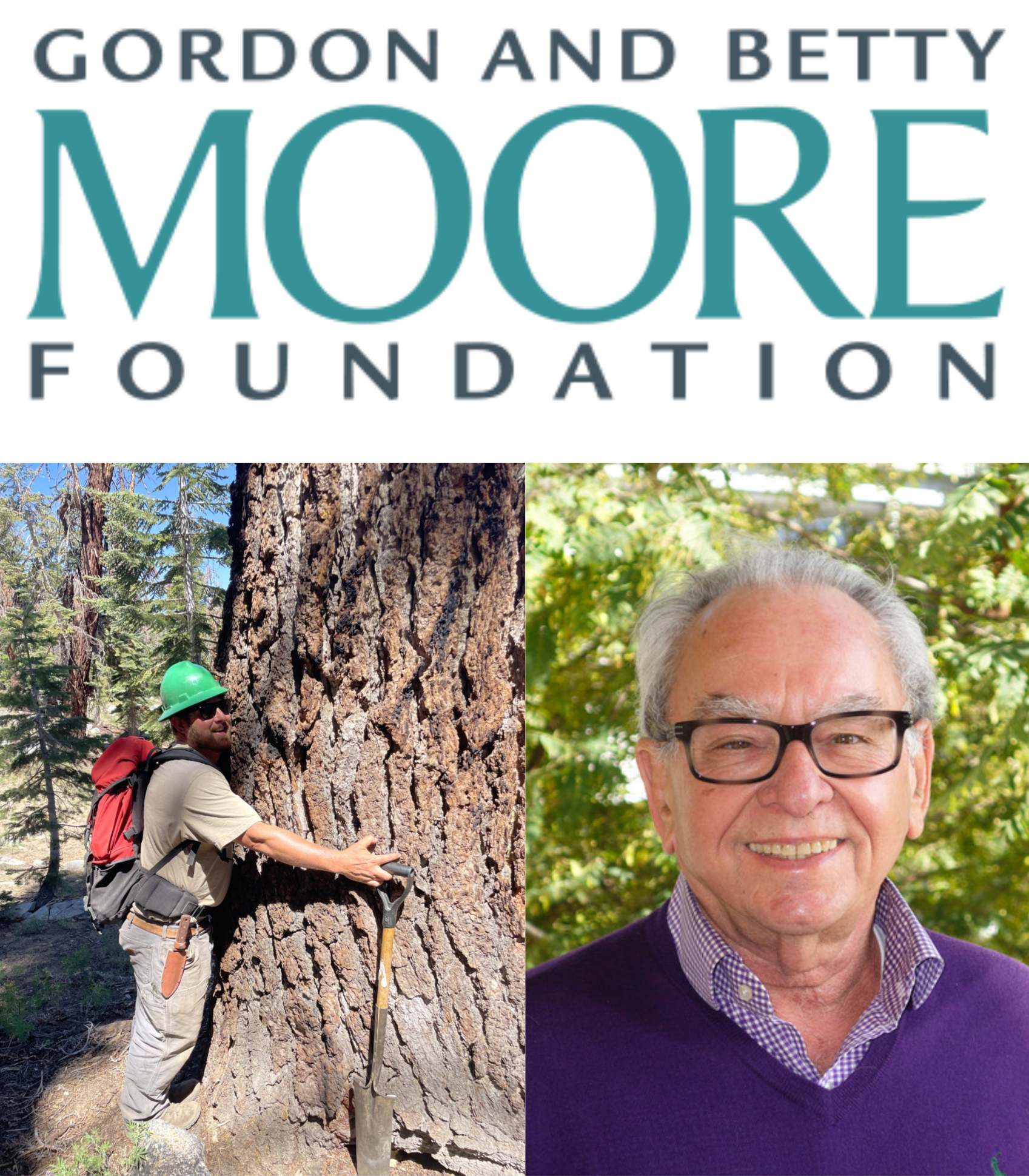
In November 2022, Cal Poly’s WUI FIRE Institute faculty won a four-year grant of $879,411 from the Gordon and Betty Moore Foundation. The project, entitled “Increased Fire Resiliency at the Community Scale Through Planning and Fire Ignition Prevention,” is being led by Dr. Stewart Wilson in the Natural Resources Management and Environmental Sciences Department and Dr. William Siembieda in the City and Regional Planning Department. Dr. Wilson is leading a project on fire retardants. His team includes Dr. Richard Emberley from the Mechanical Engineering Department and the Fire Protection Engineering Program, Dr. Scott Steinmaus from the Plant Science Department, and Drs. Bwalya Malama and Chip Appel, both from the Natural Resources Management and Environmental Sciences Department. The goals of this project are to assess repeated applications of fire retardant to the soil, the groundwater, and the vegetation, and to assess their effectiveness in suppressing fire.
Thank you to Tim Northrop, Senior Director of Development in the College of Agriculture, Food, and Environmental Science, for his invaluable assistance.
For more information, please contact Dr. Wilson at swilso49@calpoly.edu or Dr. Siembieda at wsiembie@calpoly.edu.
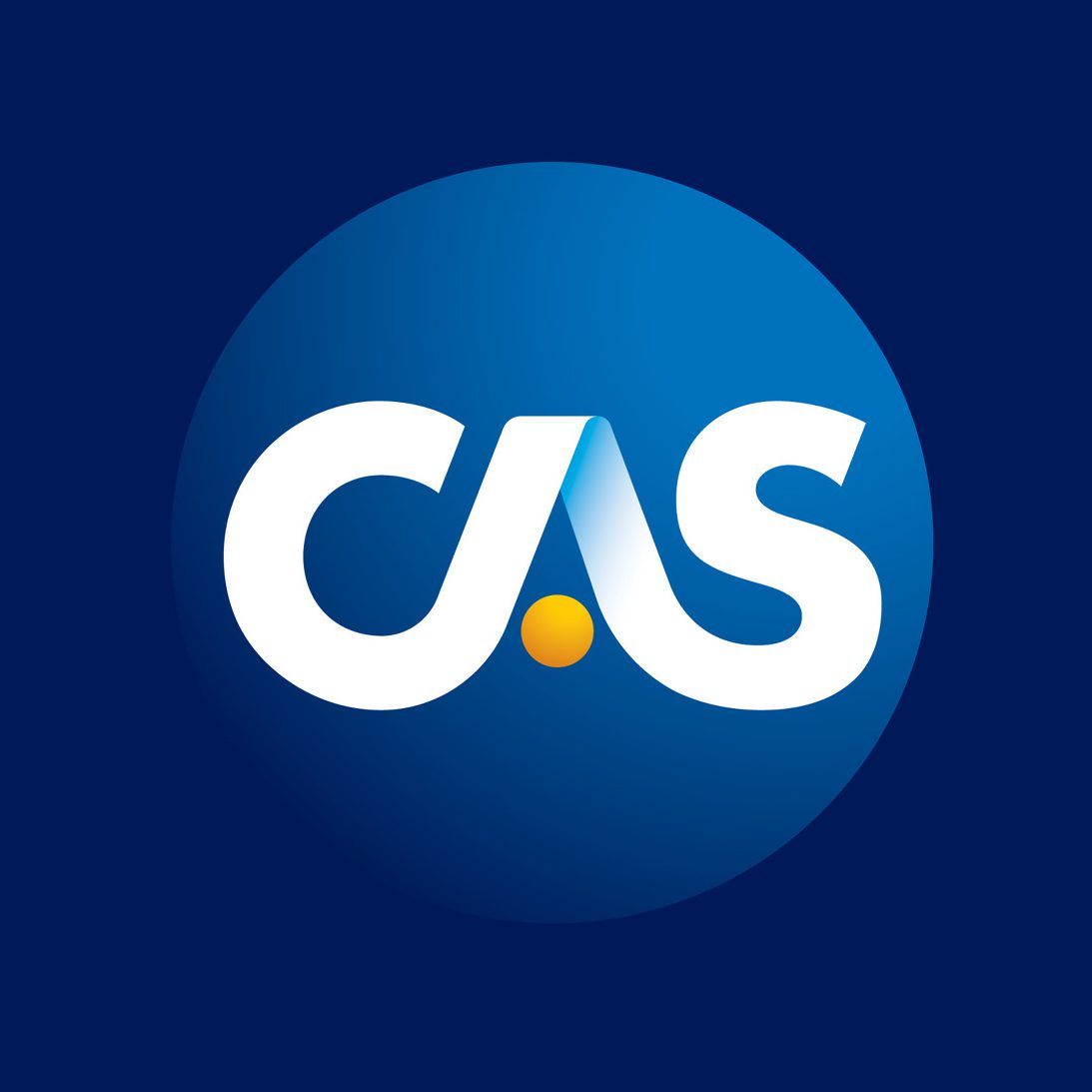
Arlington, Va. – October 25, 2022 A new Casualty Actuarial Society (CAS) Research Paper provides the first detailed road map for understanding and quantifying the impact of wildfire mitigation on homeowners insurance premiums. Catastrophe Models for Wildfire Mitigation: Quantifying Credits and Benefits to Homeowners and Communities explores the need for catastrophe models to perform the quantification of mitigation efforts, outlines actuarial considerations and approaches for developing wildfire mitigation premium credits, and describes challenges in obtaining data and implementing mitigation premium credits. The paper illustrates these concepts through a detailed case study based on a specific community representing a significant concentration of wildfire risk in Northern California.
Unprecedented costs from wildfires in the American West have spurred a need for wildfire risk reduction in at-risk areas; meanwhile, communities and homeowners need tools to understand the costs and benefits of various means of wildfire risk mitigation. Appropriate quantification of the impacts of various mitigation efforts (such as mitigation premium credits) can benefit both insurers and consumers, as well as inform public policy and public safety decisions.
The CAS Research Paper is intended as a blueprint to better understand the cost-benefit of mitigation premium credits and provides a methodology that stakeholders can construct to reduce the risk of wildfire.
“Wildfires are having a profound impact on communities, and Casualty Actuarial Society members have the insurance and risk expertise to help quantify mitigation efforts,” said CAS President Kathy Antonello, FCAS. “Catastrophe models are a valuable tool to understand the interplay between different mitigation efforts and the cost-benefit of making these changes. Expertise from actuaries is key to understanding the results of these models.”
Dave Winnacker, Fire Chief of the Moraga-Orinda Fire District, California, said the study “represents an important step forward and provides a framework to value, and thus encourage, community-wide adoption of proven defensible space- and home-hardening mitigations that matter.”
The CAS commissioned Milliman, Inc. and CoreLogic to produce the research paper.
“With California now enforcing new insurance pricing regulations, it’s more important than ever to understand and quantify the key variables that affect wildfire risk and how they relate to homeowner policy premiums,” said Nancy Watkins, FCAS, a principal at Milliman and co-author of the report.
While the study is intended as a blueprint and presents illustrative results only, wildfire risk and mitigation remains a complex topic that needs to be understood, communicated and addressed by a variety of stakeholders including actuaries, catastrophe modelers, community leaders and fire experts, and policymakers.
About the Casualty Actuarial Society
The Casualty Actuarial Society (CAS) is a leading international organization for credentialing and professional education. Founded in 1914, the CAS is the world’s only actuarial organization focused exclusively on property and casualty risks and serves over 9,500 members worldwide. CAS members are sought after globally for their insights and ability to apply analytics to solve insurance and risk management problems.
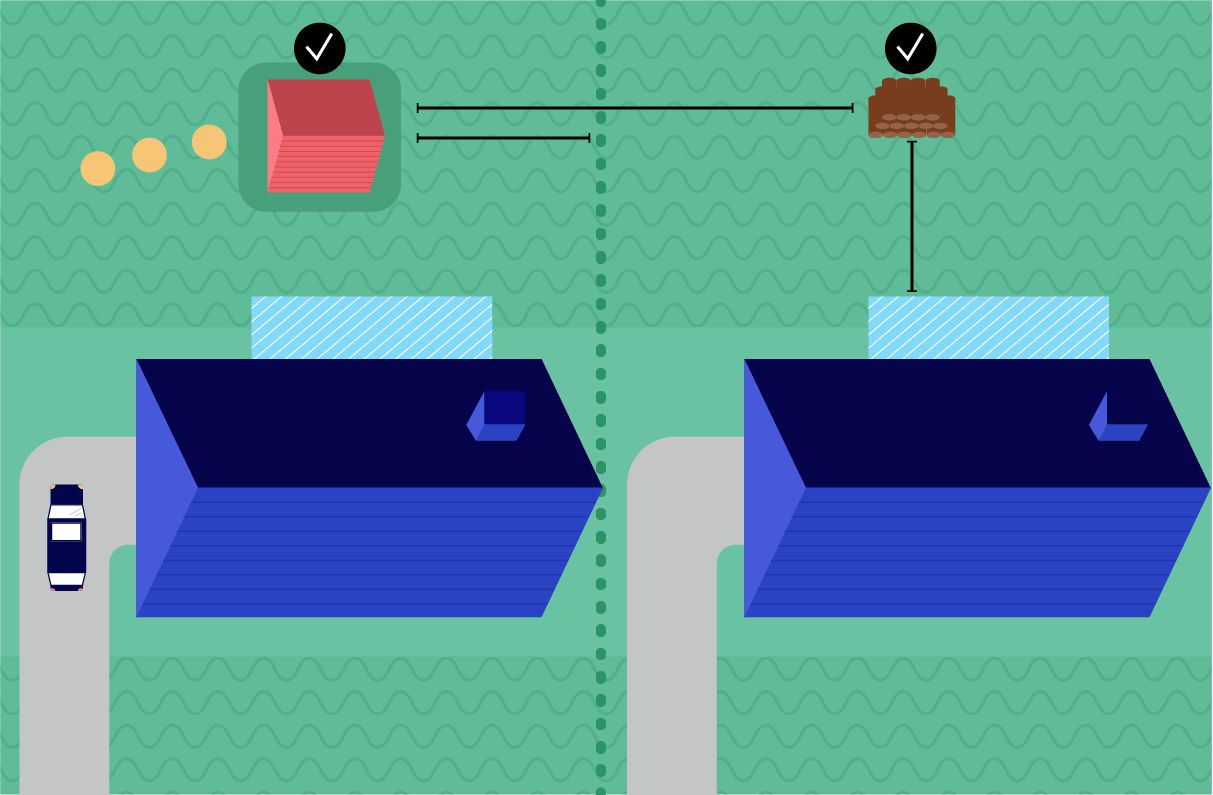
Once they have a foothold, severe wildfires can quickly overwhelm a community, particularly one that is densely packed. To shield houses against such a fierce threat, a thorough defense is key.
Establishing a deep and multifaceted defense in and around homes is the basis of a new report that offers direction for safeguarding residences from external fire threats. Developed by fire safety experts at the National Institute of Standards and Technology (NIST), the California Department of Forestry and Fire Protection (CAL FIRE) and the Insurance Institute for Business & Home Safety (IBHS), the guidance provides dozens of protective actions — and the context in which each should be taken — all backed by the latest fire science.
This new approach, which is already being implemented in California by the California Governor’s Office of Emergency Services (Cal OES) and CAL FIRE through a pilot program called the California Wildfire Mitigation Program, could spare homes and lives from the intensifying threat of wildfires.
“We've seen all these destructive wildfires come through and burn thousands of homes. The way we aim to reduce those losses is to upgrade structures and then create defensible space around them,” said Steven Hawks, CAL FIRE chief and report co-author.
The strategy described in the report is the keystone of the recently launched California pilot program, which is meant to provide support to communities statewide. While the guidance is available for anyone to implement voluntarily, the cost of putting it into practice may be steep for some.
“That's where the California Wildfire Mitigation Program really steps in and provides the expertise, the education, the funding to back all of those mitigation measures at the level of each individual property,” Hawks said.
With significant gaps in fire codes and regulations, such as the lack of measures that address fire spread between properties, CAL FIRE worked closely with NIST and IBHS researchers to produce a more comprehensive defensive strategy.
The authors of the report compiled methods to protect against wildfires’ two main weapons of choice: flames and airborne pieces of burning debris called embers.
For a home to be made fire resistant, or hardened, up to 40 different components — such as windows, gutters and the deck — may need to be upgraded, either by adding to or replacing them with less flammable material. And because of how pervasive embers are, all 40 boxes must be checked in the end for a homeowner to reap much of any reward.
“If you have literally a million embers flying about your home and you have vulnerabilities, they’re going to find them,” said Alexander Maranghides, a NIST fire protection engineer and lead author of the report. “Hardening half of your home is not going to give you 50% improvement. You cannot pick and choose.”
In contrast, flames exhibit a much shorter reach than embers, and the approach for fending them off is more tailored to a home’s individual circumstances. The authors advise assessing the types and proximity of combustible features on a home’s lot and surrounding lots to determine where potential flames are a threat and identify appropriate actions.
The first line of defense for flames is to either remove combustible items, such as wooden furniture or sheds, or push them away from a home by a distance the authors determined to be safe.
In cases where a combustible object, such as a neighboring home, is dangerously close and moving it is not a realistic option, the guidance recommends hardening specific home features that would be in striking distance as a last resort, Maranghides said. This might mean having just the wall facing a neighboring home clad in a noncombustible material, for example.
The implementation of this strategy by every residence is especially critical in crowded neighborhoods where only a few feet may separate homes, potentially linking their fates in the event of a wildfire.
In California, the guidance is already seeing action through the pilot program, with Cal OES and CAL FIRE using it to assess and upgrade the properties of homeowners in three pilot communities across the state, including San Diego, Shasta and Lake Counties.
For Maranghides, the hope is that California is only the beginning. With several other states already grappling with an ever-increasing wildfire threat, the new, holistic approach for protecting homes and thus communities could be broadly applied throughout the U.S.

With fire preparedness top-of-mind for many, we are proud to partner with the Cal Poly San Luis Obispo Wildland-Urban Interface (WUI) FIRE Institute to help support its new fire science program.
This program is the first of its kind in the country and is dedicated to creating wildfire-resilient communities by focusing on the Wildland-Urban Interface, the zone of transition between unoccupied land and human development, and how to manage fire threats in these areas.
SDG&E environmental technology and regulatory lead, Chris Terzich explains that “SDG&E aligns with the Institute’s commitment to developing solutions for more effective preparedness and response operations through applied research and technology.”
Due to his involvement, since 2013, with the Cal Poly Natural Resources and Earth Sciences Department Advisory Council, Terzich is proud to have spearheaded our and other investor-owned utilities’ (IOUs) support for the research-oriented institute.
“We welcome the opportunity to aid the organization’s goal to be the ‘center of excellence’ using a multi-disciplinary systems-based approach focused on education and research,” said Terzich. “We applaud the Institutes’ broad focus on the multi-faceted wildland fire problem, where the electric utilities are only one of many factors to be considered. The institute will have the ability to connect multiple public and private stakeholders to establish statewide research, collect and disseminate information, convene stakeholder dialogues, guide workforce education and training, and inform policy.”
Cal Poly faculty and students will work alongside members of the IOUs and stakeholders on real challenges and issues to develop a model institute that mitigates the Wildland-Urban Interface fire threat in California. The objective of the institute is to reduce wildfire losses on an international scale via public education, applied interdisciplinary research and workforce development.
The WUI fire risk mitigation’s approach lies in examining things from a holistic approach that engages agencies, practitioners, stakeholders, and scientists in the natural, built, and social environments.
SDG&E is one of three investor-owned utilities providing funding to the institute that will hire a full-time Director to lead its commitment to the teaching and learning experience, interdisciplinary innovation and connecting of stakeholders for impactful WUI fire research.